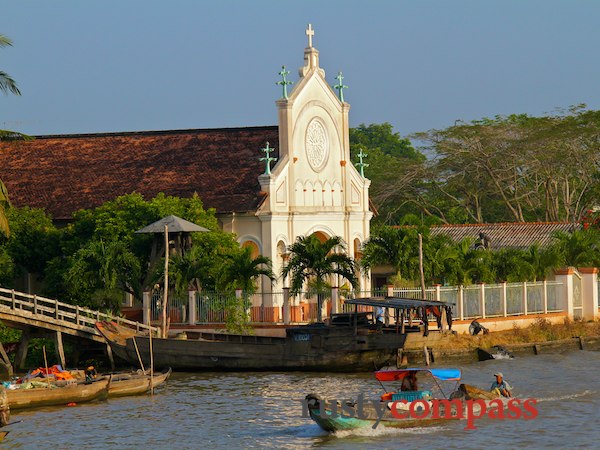
Photo: Mark BowyerThe classic delta town of Hoa Ninh
I decided to book a three day two night tour - Mekong Waterways - with Buffalo Tours as part of my survey of Vietnam’s major independent local travel companies. It seemed to cover off my big interests - river life, cycling a homestay and the major stops of Can Tho and Cai Rang Market.
Day 1 - to Cai Be and Mekong Homestay
We set off on Monday for the three hour drive to Cai Be where we boarded the long boat that would take us around for the next couple of days. The drive to Cai Be is as manic as any in Vietnam. Saigon has burst its city limits and seems to merge seamlessly with the Delta. Forget any notions of romantic roads in beautiful rural settings. New roads mean that bicycles, motorbikes, cars and trucks compete for road space and drive even faster and more erratically. Happily, a barrier between lanes separates oncoming traffic reducing the ever present risk on Vietnamese roads of speeding traffic on the wrong side of the road.
We left the busy traffic, boarded our boat at Cai Be and headed straight for the floating market. By the time travellers arrive from Saigon at around 11AM, the market activity is pretty well over for the day - so it’s more a tour of houseboats but it’s worthwhile anyway.
From the market, it’s off to the candy and rice paper factory. Factory stops on any tour should raise alarms - but this one made the grade. It was only a short stop and there was no hard sell to buy anything - and it was interesting to watch the simple processes by which the locals manufacture coconut candy, popped rice crackers and rice paper. The samples were all very tasty.
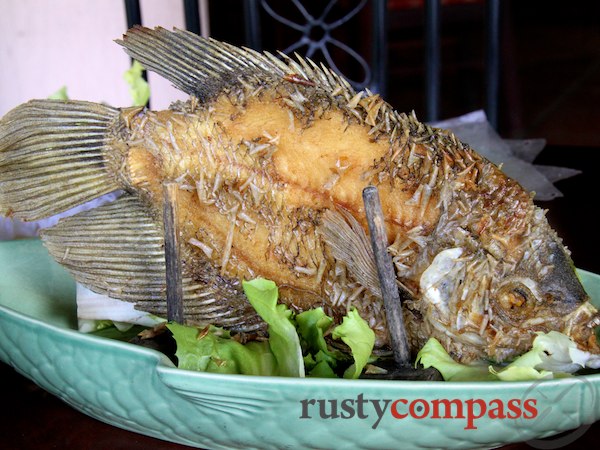
Photo: Mark BowyerElephant ear fish is a delta tourism cliche - fortunately it tastes great
After lunch we climbed back aboard our boat and headed down a small canal towards our homestay.
A homestay is what I was promised but that’s not what I got. And it’s my understanding that none of the accommodations purporting to be homestays in the Mekong Delta really are. My homestay accommodation was a very basic (no air conditioning, hot water or doors) guest house. It was perfectly pleasant and its location was lovely - but it wasn’t a homestay. It was a purpose built budget accommodation with bedding for upwards of twenty travellers. There was no sign of a local “home” as such. I was the only guest during my stay.
Both dinner and breakfast at the “homestay” were very good and included in my tour cost.
After lunch, my guide insisted he needed a siesta. He had warned me soon after leaving Saigon that he was suffering from a hangover after having watched Vietnam defeat Malaysia in football on Sunday night. So I decided to take a walk for an hour.
The walk was not especially interesting until I stumbled across a wonderful man in his sixties. He and his wife invited me in for some pomelo where he showed me pieces of calligraphy he had created using the now near extinct Vietnamese script known as chu nom
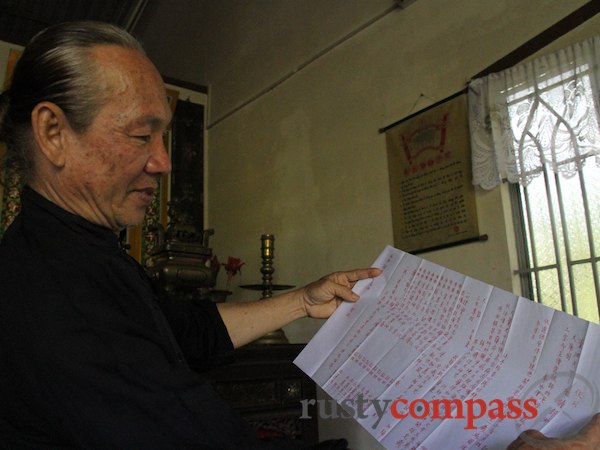
Photo: Mark BowyerA delta resident displays his "chu nom" calligraphy work
After my walk and its delightful impromptu home visit, we jumped on our bicycles for a ride around the area. The bikes were in appalling condition, as most rental bikes are throughout Vietnam. They were just adequate for the ride as the terrain was mainly flat and there was no hurry.
The ride was wonderful. The nicest thing about the area I was staying is that much of it is inaccessible to cars and trucks. Our ride was mostly along small country lanes running by canals and through simple delta houses. We stopped at a quaint delta town called Hoa Ninh - the kind of old world river town you might have conjured when planning to travel to the Mekong Delta. On the way back, we also took some stops to talk to locals who were relaxing at home at the end of a day in the orchards.
Dinner at the homestay was solid and tasty and I was asleep soon after 9PM.
Day 2 to Cantho
Markets in Vietnam are at their liveliest in the early morning so I decided to revisit the small market at Hoa Ninh before we set off for our day’s touring. It ended up being the highlight of the day. At 7AM, the market was bursting with activity and the people were incredibly friendly and welcoming. I didn’t spot another traveller either.
After returning to my guesthouse / homestay, we set off for more organised touring which would take us to Can Tho - the biggest and wealthiest city in the Mekong Delta.
En route to Can Tho, another factory visit was scheduled. My suspicions were once again aroused. Once again though, it wasn’t a shopping scam. And perhaps for the wrong reasons, I found the factory very interesting.
We visited a combined brick and pottery factory. It was a very large complex but it was clearly running well under capacity. Staff told me it had been hit hard by the economic crisis - especially the pottery business which was wholly dependent on exports. In a complex that employed 100 plus potters two years ago, there was only a single woman working.There was more happening at the brick kiln but it was also operating well under capacity.
A striking feature of the factory and the Mekong generally was the visibility of women doing the hard labour.
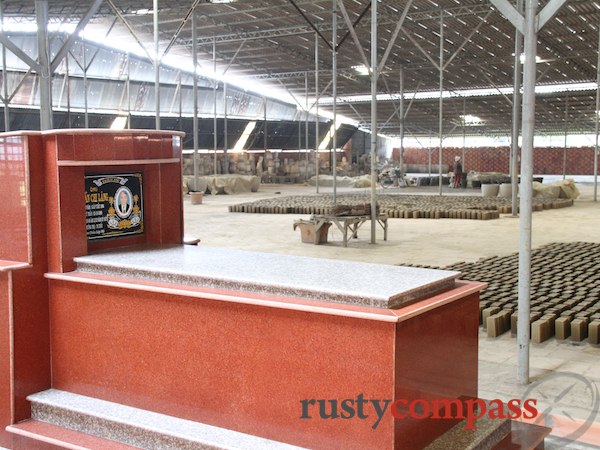
Photo: Mark BowyerThe factory founder's grave sits bang in the middle of the vast and now largely empty factory space
From the factory we commenced our journey to Can Tho by road. Getting to Can Tho is still pretty hard work with a ferry crossing of the river that can involve delays of hours. The end of an era is nigh though as another Mekong River bridge crossing will open in April making Can Tho accessible by road for the first time. The people who have made the crossing on a daily basis for decades seem to feel little nostalgia as the ferry crossing draws to the end of its life.
We arrived at Can Tho in time for lunch at Nam Bo restaurant. It’s a lovely French era shophouse that’s a favourite with tour groups. The set menu that was included as part of my trip was very ordinary however - a shame given the Mekong’s abundance of tasty produce and great culinary traditions.
I had a free afternoon for exploring Can Tho. I hoped that I would find something of interest - but I was disappointed. I walked along the waterfront, through the market, took a sunset boat trip - but at the end of it all, was left feeling that so much time in Can Tho made little sense.
Day 3 - Cantho, Cai Rang Market
Most travellers use Can Tho as a base for a visit to Cai Rang floating market - the biggest in the Mekong Delta. Once again an early start is in order - by 8AM activity at the market is well and truly winding down so you should leave your hotel at 6AM or soon after.
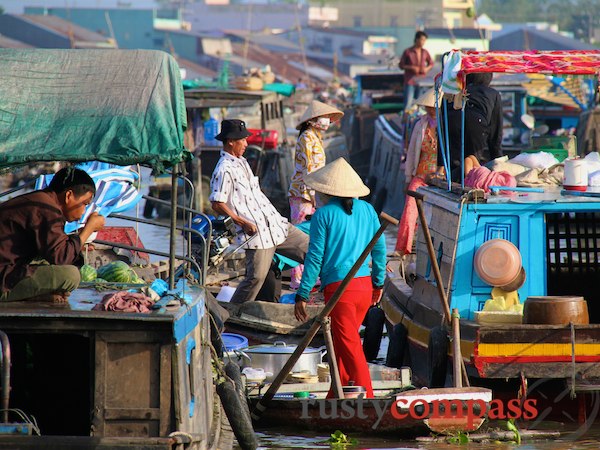
Photo: Mark BowyerFrenzied activity at Cai Rang market - the earlier you arrive the better
We were on our way for the long journey back to Saigon from Cantho by 10AM and I was left wondering whether there were better things to see in the Mekong Delta than spending nearly 24 hours in Can Tho. The ferry crossing of the Mekong took more than 90 minutes on the way back - not a bad effort I was assured by my driver and guide and we headed on for Ap Bac not far from My Tho.
Ap Bac is one of those very ordinary places in Vietnam that had an outsized role in twentieth century history and America’s war in Vietnam. It was in this small hamlet on January 2 1963 that the Viet Cong won their first important victory against South Vietnamese Forces and their American “advisors”. Tales of the battle and the poor coordination between South Vietnamese Army forces and their US advisors made their way back to Washington drawing into question the US strategy for fighting the communists as well as the willingness of the South Vietnamese government to take the fight to the enemy.
Ap Bac also revealed for the first time that helicopters and armoured personnel carriers were not immune to the increasingly sophisticated tactics and weapons of the Viet Cong. Five US choppers were destroyed.
The Viet Cong suffered 18 killed while the South Vietnamese ARVN suffered 80 dead. Three US advisors were also killed.
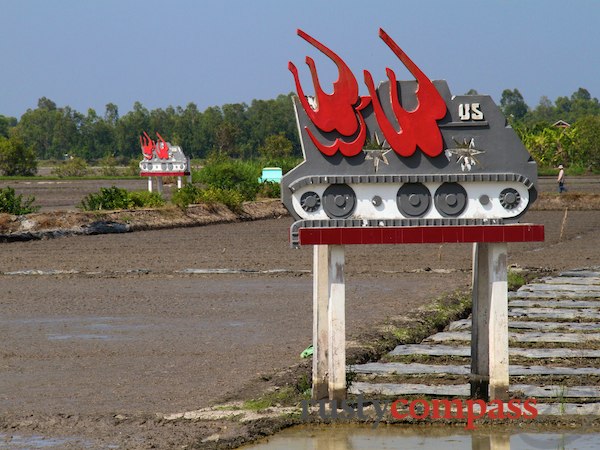
Photo: Mark BowyerThis monument in the middle of a rice paddy marks the spot where a US armoured personnel carrier was destroyed in the Battle of Ap Bac
From Ap Bac, we took a late lunch and arrived back in Saigon at around 4PM.
It was a good trip and the Mekong Delta remains well worth including in travels around Saigon. I was not happy with the arrangements made by Buffalo Tours however. The highlights of my trip - cycling around the homestay and the morning visit to Hoa Ninh town were instigated by me. Cai Rang market was another highlight that was included in the tour but the free time in Can Tho seemed a waste and this time would have been better spent doing further cycling or exploration of more small villages like Hoa Ninh.

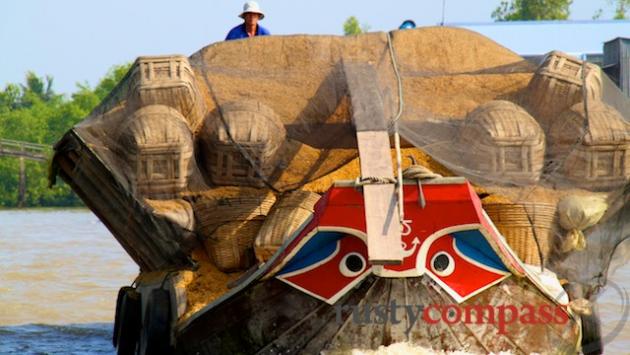



There are no comments yet.